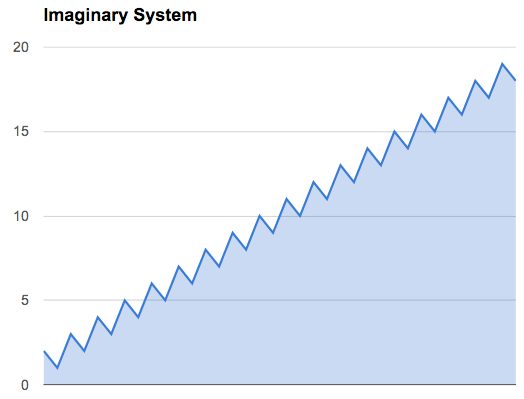CrazyIvan Results
CrazyIvan Results
CrazyIvan was introduced in late August of 2013 and, as our luck would have it, spent the rest of that year getting its butt kicked. Somewhere in November we realized that something was awry and we dug deep to figure out what exactly was going on. We had been prepared for draw downs but what we were seeing was outside our original system specifications. It took us a few weeks and in the end it was once again proven that premature optimization is the root of all evil. It turns out that the low volatility market filters we had deployed, convinced they would improve the system during sideways periods, apparently were the culprit. We then simplified and replaced our volatility filters in late December and as such we have been running two systems – CrazyIvan 2013 and CrazyIvan 2014.
The max draw down was around NYE 2013 just before we switched over – as one might imagine quite a few subs had shaken out by then. Which is rather unfortunate as it’s been completely on track since then. Compare this with the results since 1/1/2014:
If you divide the combined results by 6, as it is running on 6 pairs, it is taking an average of 240 trades per year per 8hr pair. It is making an average of 2.33R / month or 27.6R / year per pair. That is absolutely on track as since day one CrazyIvan 480 was expected to produce 30R per symbol per year. Of course it is not doing it the way the average subscriber would imagine it:
Yes, wouldn’t that be nice – I’d love to trade a system like that. Psychology is a big factor when trading a system and I would be the first one to admit that CrazyIvan is not easy to follow – it really grinds it out on a daily basis. But that is exactly what we warned about when we introduced it back in late August. If you decide to trade CrazyIvan then you are probably not the type of trader that expects to double one’s principal in three months. Rather CrazyIvan should play a part of your combined trading activities – if you are sweating a 5% draw down then you simply are attributing too much capital. But over the long term it’s no different than other successful systems out there. Not convinced? Let me prove it to you:
The video starts at the 38 minute mark but I recommend that you really watch all of it. Nick Radge makes some very excellent point and I consider this video a must see for anyone even thinking about trading automated systems or joining a fund. Look at what happened with CrazyIvan in its first three months (with bad filters I may add but it is officially on the map) and then compare it with what occurred right after Bill Dunn got started back in the 1970s:
Did he throw in the towel? No he did not – and neither did he in 1982, in 1986, 2001, etc. But look at that overall growth curve – and it’s producing a bit over half of what CrazyIvan is expected to. Also, never underestimate the power of compounding – of course it works both ways. It’s wonderful to double your account in six months but the sad reality of most retail traders is that they wind up losing over half of it during the rest of the year. There you are – back to square one. Running a trading blog for over five years (3000 posts and counting) has offered me a front row seat to the trials and tribulations of the average retail trader.
Bottom Line:
CrazyIvan is not a system you sign up and try for three or six months. It takes discipline to endure the grind and you may just enter at the onset of a drawdown. Hence it should be part of your portfolio accompanied by other trading activities – i.e. discretionary trading or other automated systems. Long term I expect it to do equal or even exceed what other systems of its kind have been doing. If you seek the holy grail – i.e. doubling your money in three months – then CrazyIvan is surely not for you. However if you are looking for a long term system that churns out 25R – 35R per year on average per symbol then you may consider signing up.
System trading is a bit like gym memberships. You don’t throw in the towel if you don’t look like a Greek God within three or six months. Progress is accumulative and it takes more effort and discipline than you probably expected





















